In Mexico City, pleasantries help keep the city afloat
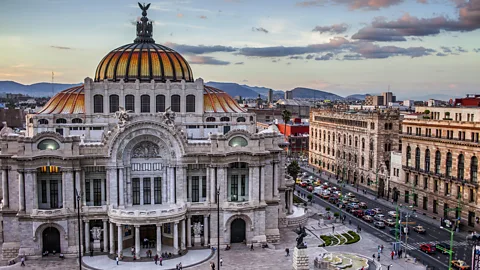 Lucas Vallecillos/Getty Images
Lucas Vallecillos/Getty ImagesThere are two things that will get you absolutely nowhere in Mexico City: getting visibly upset and being overly direct.
I’d lived in Mexico City for about six months before witnessing somebody get visibly angry in public. And it wasn’t a Mexican.
It was just after the workday had ended, and the buzzing cafe I was in had a perpetual line wrapped around the counter. Suddenly a man began to raise his voice toward the cashier. “You’re trying to rob me!” he yelled in Spanish, with a non-Mexican accent.
He looked around the cafe and announced loudly that he had given the cashier 500 pesos, but had only received change for 200 pesos. The young cashier appeared mortified, and people in line turned their gaze to their feet or the pastry display in front of them.
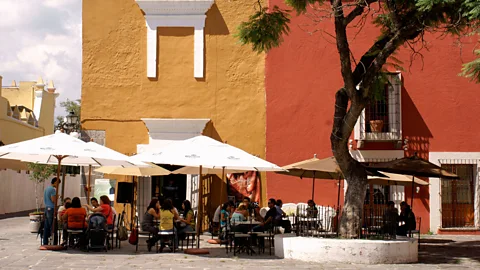 John Mitchell/Alamy
John Mitchell/AlamyYou may also be interested in:
• The confusing way Mexicans tell time
“This is unbelievable!” The man was now shouting, his ire and frustration directed at everyone in the cafe. “This is criminal.”
No-one came to his aid. Everyone was simply too shocked that he would raise his voice so aggressively. Finally, the cashier turned around and went into the back room. The man huffed and puffed for another minute before storming out of the establishment. Once he was out of sight, the cashier returned, smiled at the next customer and continued taking orders as usual.
I have no idea where this man was from, but clearly, he wasn’t from Mexico City. Or Mexico anywhere. Rarely will you see a Mexican publicly lose emotional control, unless perhaps an excess of tequila has been involved.
This is because there are two things that will get you absolutely nowhere in Mexico: getting visibly upset and being overly direct.
 Lucas Vallecillos/Getty Images
Lucas Vallecillos/Getty ImagesFrom a young age, Mexicans are taught not to get overly emotional. The common Mexican saying ‘El que se enoja pierde’ literally means ‘He who gets angry, loses’.
“We’re taught that we need to remain as calm as possible in every situation,” said Eleazar Silvestre, a fellow Mexico City transplant who is originally from the northern desert state of Sonora.
And this is taken to a whole new level in the central part of the country, including Mexico City, which is considered one of Latin America’s most modern and cosmopolitan cities.
“You cannot be direct here, under any circumstances,” Silvestre said.
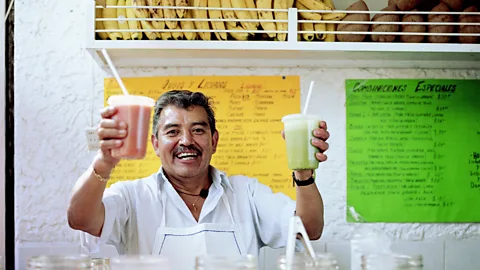 Tony Anderson/Getty Images
Tony Anderson/Getty ImagesThe cultural norms in Mexico City involve a level of politeness, at least on a superficial level, that I've not experienced in other cities of its size. Surely, with 25 million people making their way through the sprawling megalopolis daily, tensions should be remarkably high. But here, there's a sort of organised chaos and functionality resting on exchanges of pleasantries (routine greetings and farewells specifically, especially among strangers) and an impressive level of patience.
For example, a simple request of ‘Pásame la sal, por favor’ (please the salt) goes down much better in Mexico City if worded as ‘Podrías pasarme la sal si eres tan amable’ (Could you please me the salt if you would be so kind) and followed by a ‘Que amable. Muchas gracias’ (How kind. Thank you very much).
These traditions of respectful language have been handed down by the country’s indigenous populations (including the Aztecs, whose descendants are the modern day Nahuas), later blending with the courtly traditions of the Spanish when Hernán Cortés and his team of conquistadors marauded through the region in 1519. While the north of the country was settled very differently, with a less distinct colonial period, central and southern Mexico were heavily influenced by 300 years of Spanish rule followed by nearly 100 years of Mexican dictatorships.
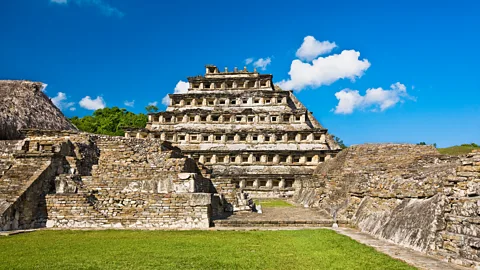 Glow Images/Getty Images
Glow Images/Getty ImagesNever say no
If you are being asked to do something that you can’t or aren’t interested in, you are welcome to say ‘ahorita’.
“Indirect communication styles have to do with a lack of confidence,” explained Patricia Gallardo Arias, anthropology professor at the National Autonomous University of Mexico (UNAM). “In the case of Mexico, it could be related to the conquest and the political climate.”
This can especially be seen in Mexico City, which lies in the centre of Nahua territory – the centre of the Aztec empire.
“From the beginning of the colony, the Nahua, which were the majority in the centre of New Spain, had a complicated and baroque system of courtesies, which was transplanted to the Spanish of Mexico,” said Luis Fernando Lara, professor of linguistics at UNAM. “Also, evidently, we have thousands of Nahuatl words in our Spanish.”
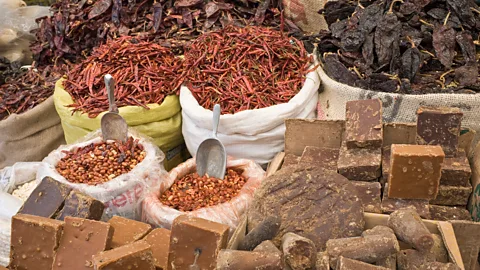 ML Harris/Getty Images
ML Harris/Getty ImagesToday’s Nahuatl is still spoken by roughly 1.5 million Nahua descendants across Mesoamerica – with the majority of them living in the hilly surroundings of southern Mexico City and dominating the city's service industries and marketplaces.
As well as providing words for tomato (tomatl), chocolate (xocolatl), chilli (cilli) and avocado (ahuakatl), the Nahuatl language contains within it a reverential voice and greeting customs that involve respect, no matter the time of day nor the situation at hand. By adding certain suffixes to words, you can differentiate a person’s age, birth order and social status, as well as indicate your feelings of love for them.
